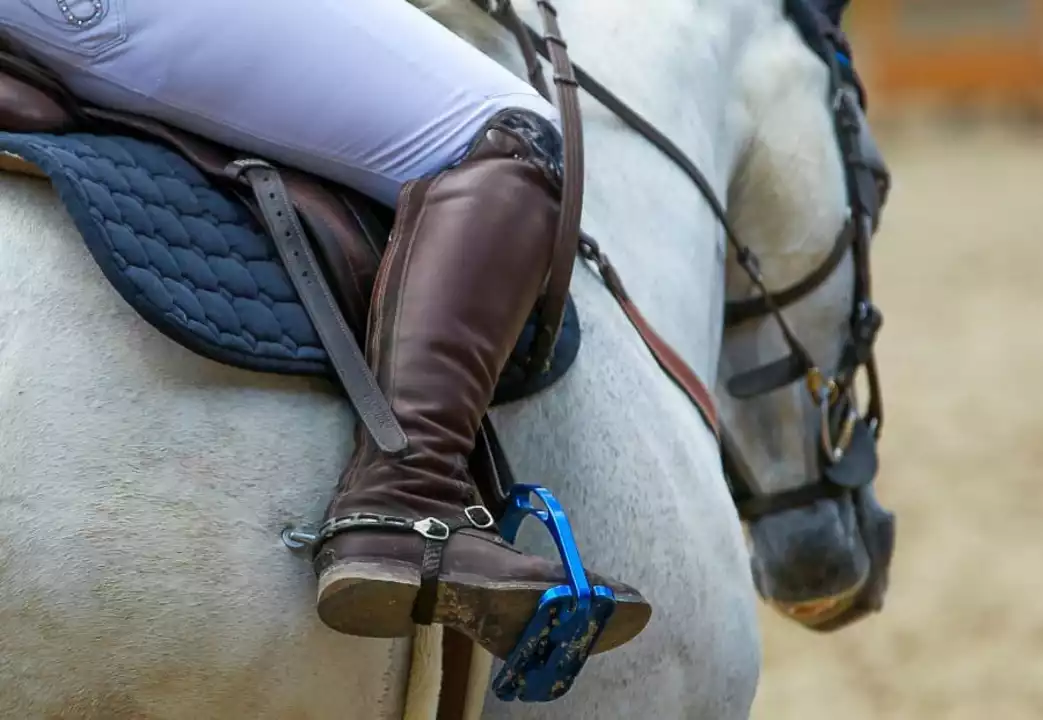- Home //
- Single
What type of Spur should I use when Horseback Riding?

Understanding the Purpose of Spurs
Before diving into the different types of spurs, it's essential to understand their purpose. Spurs are used by horseback riders to give subtle cues and communicate with their horse more effectively. They are not meant to be used as a punishment or to cause pain, but rather to reinforce and refine the leg aids given by the rider. When used correctly, spurs can help improve the horse's responsiveness and overall performance. With that in mind, let's explore the various types of spurs available and how to choose the right one for your riding needs.
Finding the Perfect Fit: English vs. Western Spurs
When it comes to choosing spurs for horseback riding, the first decision you'll need to make is whether to opt for English or Western-style spurs. English spurs are typically smaller, lighter, and have a shorter shank (the part of the spur that extends from the heel) than their Western counterparts. They tend to be more suitable for dressage and other disciplines that require subtle communication with the horse. On the other hand, Western spurs are usually larger, heavier, and have a longer shank, making them better suited for disciplines such as reining and cutting, where a quick response from the horse is crucial.
It's important to note that the choice between English and Western spurs largely depends on your riding discipline, style, and personal preference. Be sure to consult with your trainer or an experienced rider for guidance when selecting the appropriate spurs for your needs.
Types of Rowels: Choosing the Right Contact Point
Once you've determined whether to go with English or Western spurs, the next step is to choose the type of rowel - the small, revolving wheel at the end of the shank that makes contact with the horse. There are several types of rowels, each with their own unique characteristics and benefits:
1. Smooth or Round Rowels
Smooth or round rowels are gentle on the horse and provide a soft, even pressure when used. They are ideal for sensitive horses or riders who are new to using spurs. These rowels are often seen on English spurs, but they can also be found on some Western spurs for riders who prefer a milder contact.
2. 10-Point Rowels
10-point rowels have ten evenly-spaced points around the circumference of the wheel. They offer more precise communication with the horse but can also be more intense than a smooth rowel. These rowels are often used in Western riding disciplines and are best suited for experienced riders with good leg control.
3. 6-Point Rowels
6-point rowels fall somewhere between smooth and 10-point rowels in terms of intensity. They provide more specific cues than a smooth rowel but are not as sharp as a 10-point rowel. These rowels can be found on both English and Western spurs and are suitable for riders who have some experience with spurs but are not yet ready for a sharper contact point.
Selecting the Right Shank Length and Angle
Another important consideration when choosing spurs is the shank length and angle. The length of the shank determines how much pressure is applied to the horse, while the angle affects how the spur comes into contact with the horse's side. Shorter shanks are generally more appropriate for beginners, as they apply less pressure and are less likely to be used inadvertently. As a rider becomes more experienced and gains better leg control, a longer shank may be appropriate for more precise communication with the horse.
The angle of the shank should be chosen based on your riding style and the specific needs of your horse. A straight shank is more common in English riding, while a curved shank is often seen in Western disciplines. The curved shank allows for better contact with the horse's side, especially when the rider is in a deep seat or using a longer stirrup. As with other aspects of spur selection, it's essential to consult with a knowledgeable trainer or fellow rider to determine the best shank length and angle for your riding needs.
Spur Straps and Proper Fit
Lastly, it's crucial to ensure your spurs fit correctly and are secured with appropriate spur straps. Ill-fitting spurs can be uncomfortable for both the rider and the horse, and they can also be less effective in communicating your cues. The spur should sit snugly on the back of your riding boot, just above the heel, with the strap securing it in place. Be sure to choose a strap that matches the style of your spur and is made from a durable material, such as leather or synthetic materials, to ensure it can withstand regular use.
When trying on spurs, make sure they don't pinch your heel or cause discomfort. It's also essential to ensure the rowel and shank are positioned correctly for your riding discipline and personal preference. Remember, the ultimate goal is to enhance your communication with your horse, so take the time to find the right spurs that will help you achieve that goal.
- May 6, 2023
- Caspian Redgrave
- 0 Comments
- View posts
- permalink
Write a comment